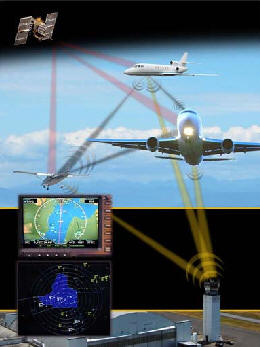|
|||||||||||
|
|
|
|||
|
Pilots And Air Traffic Controllers Get Ready For ADS-B |
||||
 |
June 10, 2010 - Greater efficiency and improved situational awareness, that's what Automatic dependent surveillance-broadcast (ADS-B) promises to provide for aircraft operating in the national airspace system (NAS).
With several
airport areas already operating with ADS-B capability, as well as a
recently published rule on performance requirements, those objectives
are becoming a reality. What do these changes mean to general aviation,
a segment of the aviation community that accounts for a hefty majority
of flights in the
ADS-B is a
cooperative surveillance technique for air traffic control and related
applications being developed as part of the Next Generation Air
Transportation System.
|
|||
|
|
||||
|
"By 2020, all aircraft operating in certain
designated airspace (generally the same airspace that requires a
transponder) will be required to meet the prescribed performance
standards for positional integrity and other criteria associated with
ADS-B avionics," says Saini. |
||||
|
Realizing that cost and the limited lifespan of many
technologies may keep some pilots wary of making any major avionics
upgrades, Saini points out that the FAA is working hard with industry
and the aviation community to ensure that manufacturers bring suitable
equipment to the marketplace when it's needed, and that any required
upgrades are available at a reasonable cost. When combined with ADS-B, it allows pilots and
controllers to see the same aircraft position information. With the new
rule in place, it is expected more companies will bring ADS-B avionics
to market, spurring better prices and more competition. |
| Other News Stories |
|
|
| ?AvStop
Online Magazine
Contact
Us
Return To News
|
|


